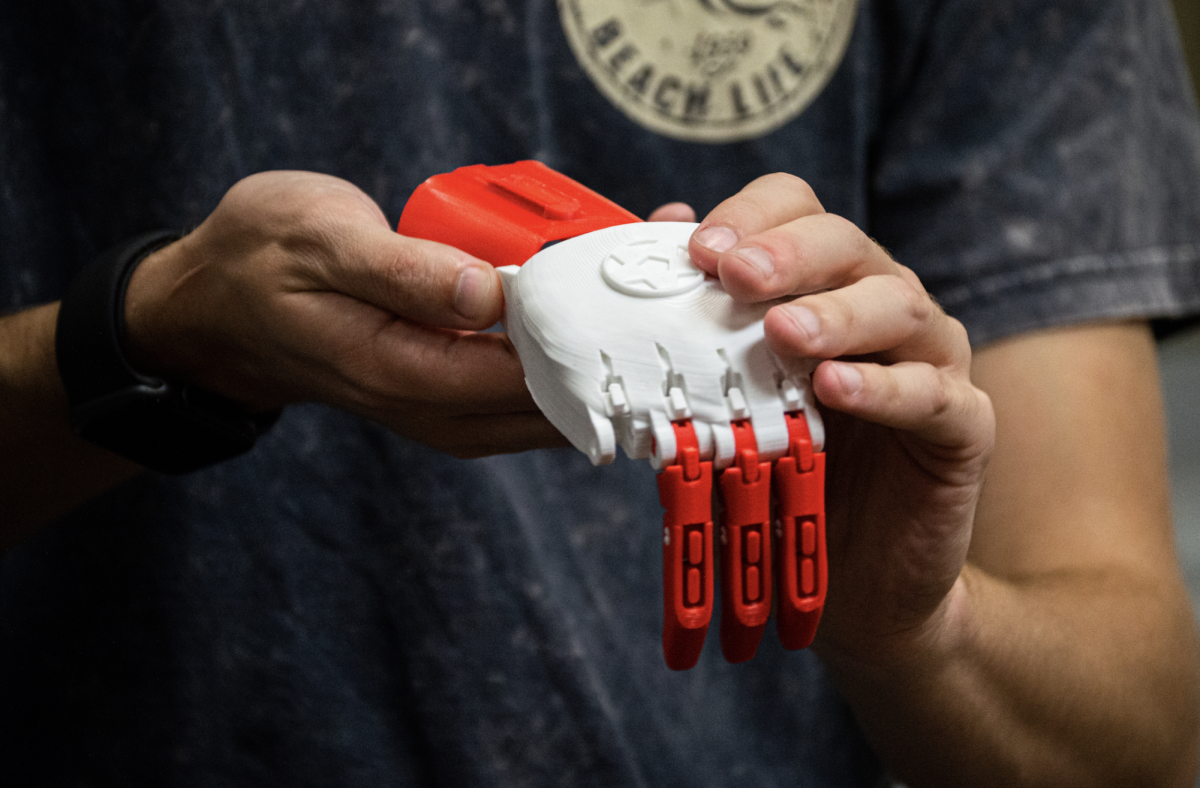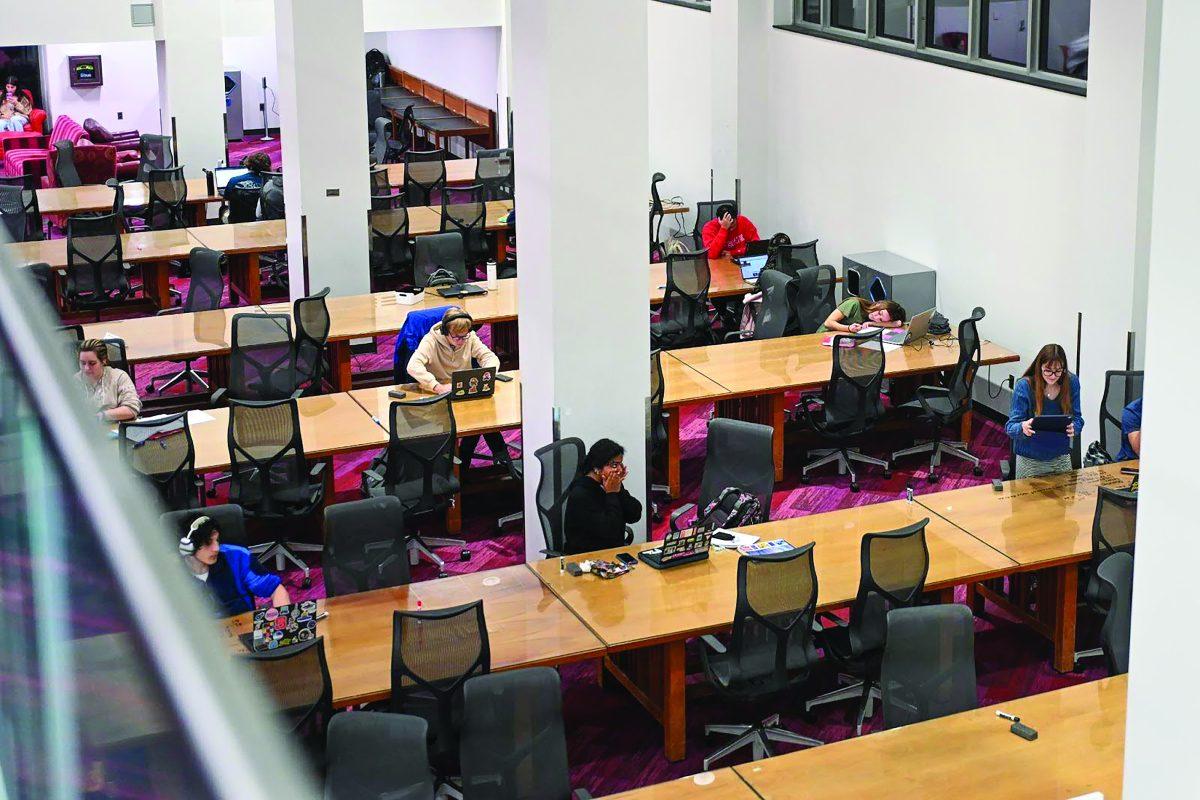Theft.
It’s the number one crime on campus, according to Sgt. Jon Barnwell of Campus Police, and most thefts are crimes of opportunity — the taking of unsecured or unattended items of value.
The Campus Security Task Force, created by Chancellor Marye Anne Fox, introduced the Campus Security and Personal Identification regulation to the University Council Monday.
“The original concern was that there were too many unidentified people around the University facilities without identification,” David Rainer, associate vice chancellor for environment health and public safety and member of the task force, said.
The Campus Security Task Force, composed of faculty, students and staff, was created to address perceived concerns of personal safety.
“The original intent was to require people to carry their IDs so that if somebody worked in a building and didn’t know who somebody was…and whether or not they belonged there, they could ask for ID,” he said.
The regulation recognizes that the University is a public institution and its buildings, facilities and property should be accessible, but because of the “nature of the work conducted within, certain areas may be accessed only if there is an academic or business need and after proof of identiy is provided.”
The regulation also states that employees and students are required to carry their AllCampus card at all times when on campus, and individuals may be asked to present their card to access buildings, before using the library and computer resources or to attend athletic and entertainment events.
“The way the regulation is written, people can be denied a University service if you can’t prove that you belong on campus” for business or academic purposes, Rainer said. He added that the regulation is not intended for individuals to be randomly asked for their identification, that there has to be a purpose for asking.
If an individual fails to provide identification, he may be denied access to the facilities, resources and benefits of certain facilities.
“The deans and department heads can require that certain places be controlled areas,” Rainer said, pointing to laboratories and animal handling areas. “No ID, no access. You could be asked to leave.”
Student Body President Will Quick said he thinks the regulation is a good idea.
“I anticipate it being a regulation that was meant, in any type of way, meant to keep people out of areas that they shouldn’t be in the first place,” he said, adding that there are areas on campus that have sensitive projects, particularly labs. “You don’t want someone accidentally bumping into a petri dish full of some type of bacterium.”
Quick also said that the regulation is important in terms of security, and that it is beneficial for scientists on campus.
“Scientists working in their private areas get that kind of luxury,” he said. “I think we should afford some of the people working on campus the same luxury.”
Rainer said he believes the regulation will make the campus safer.
“The reality is the number one crime on campus is theft associated with opportunity — people walk around in a building unchallenged and they see a door open and grab something,” he said. “Hopefully people will say, ‘May I help you? Can I see your ID?’ to determine whether or not people belong. And just by asking is a deterrent.”
Rainer said the regulation was adopted at the April trustees meeting and will be discussed during orientation for new students.
“I think you’ll find a majority of students carry an ID,” he said. “Those who don’t are the minority.”
Barnwell said the problem of theft lies with opportunists blending in, and not so much with opportunists being unidentifiable.
“It’s easy to blend into our environment and so it’s really not saying unidentifiable; it’s just that a criminal on our campus typically is not going to look out of place,” he said. “We do have some that look out of place that we wind up catching. Opportunists usually try to blend in by looking like students, faculty or staff.”
Some problems on campus associated with the regulation are students who allow others to enter buildings without access. For example, propping doors open in dorms with key-access, like Sullivan Hall.
“People prop doors open in secure areas and that’s a huge problem all over campus,” Rainer said. “That’s a really bad idea. We are hoping that students, prior to providing access to people in the dormitory, ask for ID. Just because someone looks like a student doesn’t mean they are.”
According to Rainer, a computer program can be used to lock or open doors at certain hours, and the department can program each individual access card to allow access at different times. For example, if a student is working in a lab and needs access to it 24 hours a day, he can get it; but if another student only goes to class from 8 a.m. to 2 p.m., his card might only work from 8 a.m. to 5 p.m.
The regulation probably won’t have an effect on office hours, according to Rainer. He said generally most buildings are open until 10 p.m., some until 5 p.m., but the department makes the decision of when the building is locked.
“If the department wants to have departmental hours until midnight, the department can decide to have the door open until then,” he said.
Quick said he thinks the regulation is a good idea because it allows departments to decide whether or not there are areas that should have restricted access.
“I think it’s probably best that they allow the departments to make the decision instead of going through the long drawn-out process of going through the Chancellor…so I don’t have a problem with it,” Quick said.
Some buildings on campus are currently card access, requiring an electronic key that serves as identification. In addition, a new construction security guideline suggests that all new buildings have card access on the perimeter.
“Card access is a tool that we’re trying to use across campus,” Rainer said. “A lot of urban schools have 100 percent card access now, so I think the future is to make our buildings more secure with electronic locks and card access. But again, the card is only as good as the people allow it to be.”




